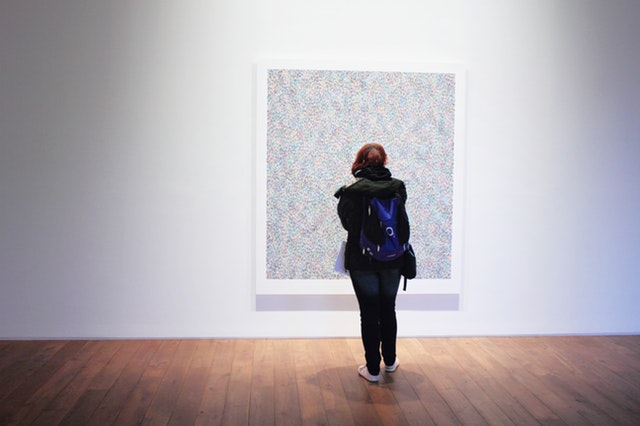Virtual Reality and Van Gogh Collide
 Museums are looking the best they have ever had, thanks to the way technology is revolutionizing the use of art. According to the American Alliance of Museums, U.S. cultural associations see more than 850 million visits annually – more than most athletic events – and represent roughly $21 billion in direct economic activity. Those impressively large numbers might be poised to increase, as museums improve their technological art amid a boom in cellular software and offerings designed to improve the experience of tech-savvy visitors.
Museums are looking the best they have ever had, thanks to the way technology is revolutionizing the use of art. According to the American Alliance of Museums, U.S. cultural associations see more than 850 million visits annually – more than most athletic events – and represent roughly $21 billion in direct economic activity. Those impressively large numbers might be poised to increase, as museums improve their technological art amid a boom in cellular software and offerings designed to improve the experience of tech-savvy visitors.
To be clear, many art traditionalists are quick to criticize the integration of virtual reality and Van Gogh. However, museums are creating a surprising discovery: technology is not hindering the appreciation of physical artwork. In reality, museum attendance has skyrocketed more than ever because computers and iPads entered the art realm, some art and IT consulting experts in Melbourne say. It is allowing visitors to experience art in a new way, while bringing displays to other people who may never even set foot at the institution in any respect.
So why would not people be tempted to abandon museums entirely in favour of scrolling Instagram? It boils down to bodily experiences which make art more memorable – just like with any relationship, according to the founder and CEO of Artsy, the world’s largest online selection of art. Carter Cleveland recently said that the physical experience of art is becoming more like online dating. He says that we would all like to meet someone in real life in the end, but it is spurred by internet platforms.
For certain segments of the population, museums are always highly appreciated, said Susie Wilkening, a spokesperson for museums in Wilkening Consulting. But that is only a sliver of the populace. For a larger chunk, museums are a means to an end; they are used for family times or to meet a trend. That is where technician comes in, Wilkening said. It caters to the people on the fence, making museums look like a simpler choice.
Jane Alexander, chief information officer in the Cleveland Museum of Art, said that the best use of electronic additions to galleries would be not to make you aware of the technology, but to make you conscious of the artwork. She explains that it is about putting art at the forefront. It is about better practices and thinking about how it can be a toolset to get people into the group. She added that how do people use our collection to bring art into their daily lives?
The museum is the home of the ArtLens Gallery, including high-tech equipment which surpasses barriers like eye-tracking, movement detection, facial recognition and IT managed and network services in Melbourne of attracting art fans. With an application, visitors can read about the art, favourite the displays they like most and make your own tour. Alexander said that their aim is to get people into the galleries, and give them the tools.
Spaces such as the Gesture and Expression display allow visitors to attack a pose like the characters of a painting, while a gaze tracker shows where a visitor focuses on looking at a work of art. The six displays feature 14 matches in total, allowing everything that successfully operated in its agile testing managed services from changing the expression of characters from paintings, to decoding symbols. It isn’t about digital for digital’s interest. Alexander said that this is all about seeing an object which might have just been 4 feet high, and seeing it enlarged and how it was created. “It makes [people] want to see the object, and they’re left in awe. ‘I cannot believe this object,’ they say, ‘it’s so beautiful.'”
While the Cleveland Museum display is fairly new, even long-standing museum giants are integrating technologies and software testing consulting services, and receiving a positive reaction. Ken Weine, the museum’s chief communications officer, in the Metropolitan Museum of Art in New York City, claims that presence is more powerful than ever, with over 7 million people in 2016. The Met recently digitized over 380,000 images from its collection, making art available to download on any computer, anywhere. Rather than simply promoting computer-screen usage of art, the change to digital sparked more museum interest than ever. Weine described it like opening up a new kingdom, merging the technology savvy with the art fanatics.
People enjoy being in a common space with their friends and family, and seeing others carrying in most sections of culture and art, according to Weine. But they also appreciate technologies. People today enjoy the picture of Washington crossing the Delaware as they cross the road. It is our job’s duty to construct the ideal experience for these two groups. For those who don’t have the resources to manage a visit to the museum, technology goes beyond adding trendy gadgets and gears. Tech can play the role to incorporate museums in the wider community. It introduces art – through iPads in public parks or videos in taxi rides, such as – to folks who would not otherwise have the time or resources to go to a museum.
“How do we take museums to … low-income people?” Wilkening asked. “Why don’t we have museums in laundromats, grocery stores? Bring a project to a food bank? It’s low stress, easy, and welcomed.”
